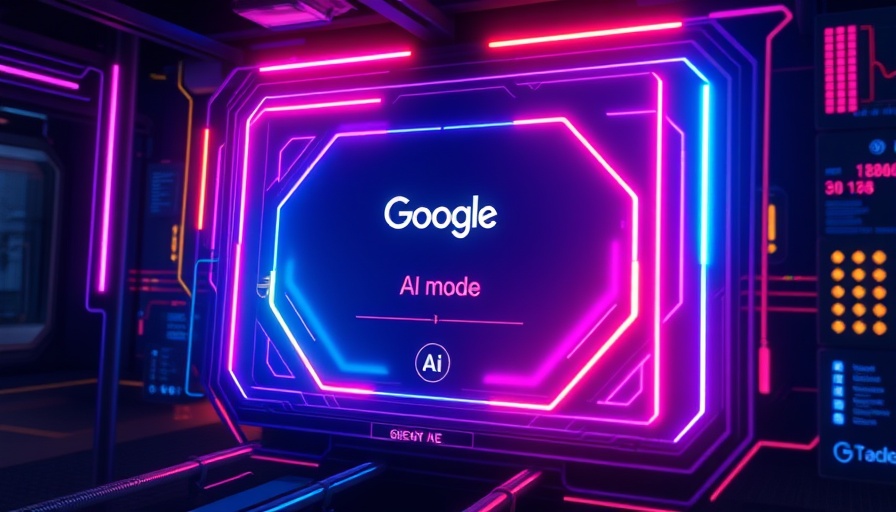
The Future of AI in Search: A Game Changer for Publishers
Google's recent announcement about testing changes to its AI Mode has the potential to revolutionize how small business owners, marketers, and agencies engage with the digital landscape. With a shift toward embedding more contextual links within AI responses, marketers now have a unique opportunity to boost their visibility and drive clicks from users who are increasingly seeking targeted information.
Encouraging Clicks: Understanding Google’s Strategy
According to Robby Stein of Google, the aim of these new features is straightforward: to encourage clicks. This is particularly significant for publishers who depend on visibility to drive traffic to their sites. The introduction of embedded link carousels and inline links demonstrates a strategic pivot designed to provide context to users, potentially transforming the user experience and resulting in higher engagement metrics. The intent is clear—be more helpful to both users and website owners, bridging the gap between informative content and actionable links.
Leveraging AI Mode: Practical Insights for Marketers
This shift also invites marketers to rethink their strategies around SEO and content creation. With AI capable of understanding user intent more accurately, businesses must focus on crafting high-quality, contextually relevant content. This means integrating call-to-action prompts within written material to guide the user’s journey seamlessly. Marketers should consider developing content that aligns with frequently asked questions, ensuring their answers are catchy, informative, and primed for AI’s increasingly intelligent parsing.
What Do These Changes Mean for Small Business Owners?
The changes to AI Mode represent both an opportunity and a challenge for small business owners. As large players like Google contend with how to best serve their users, small businesses must adapt accordingly. Publishers need to leverage this opportunity to diversify their content strategies by incorporating engaging media, optimized for both desktop and mobile. Emphasizing quality content that provides real value will likely lead to a higher click-through rate as users rely more on their AI-driven search experiences.
Future Predictions: Evolving SEO Strategies
The evolving landscape of AI-driven search provides a window into potential future trends. As Google fine-tunes when and how they present links, marketers can expect significant changes in how SEO strategies are developed. The reliance on embedded links signals a possible shift away from traditional metrics towards more nuanced assessments, like user engagement and satisfaction. Those who embrace this evolution will likely maintain an edge in digital marketing.
Actionable Insights: Adapting to Change
To make the most of these upcoming changes, small business marketers should actively collect data on how their audience interacts with content and which formats yield the most engagement. Regularly analyzing web traffic, conversion rates, and user feedback will provide insights that can inform future marketing decisions. Additionally, considering collaboration with tech-savvy partners could result in innovative content strategies that enhance visibility.
The push for greater link usage in search results can seem daunting, but it also presents an invaluable chance for businesses to step up and connect with their audiences in stronger ways. As we navigate these changes, staying informed and agile is key.
Conclusion: Embrace the Change for Growth
As Google continues to evolve its AI Mode, the focus will undoubtedly remain on enhancing user experience while providing opportunities for publishers. Staying ahead of these trends and adapting accordingly can lead to innovative marketing strategies that drive success. For small business owners, engaging directly with these advancements paves the way for leveraging AI to not only capture but retain customer interest—an endeavor that is crucial for long-term sustainability.
 Add Row
Add Row  Add
Add 




Write A Comment